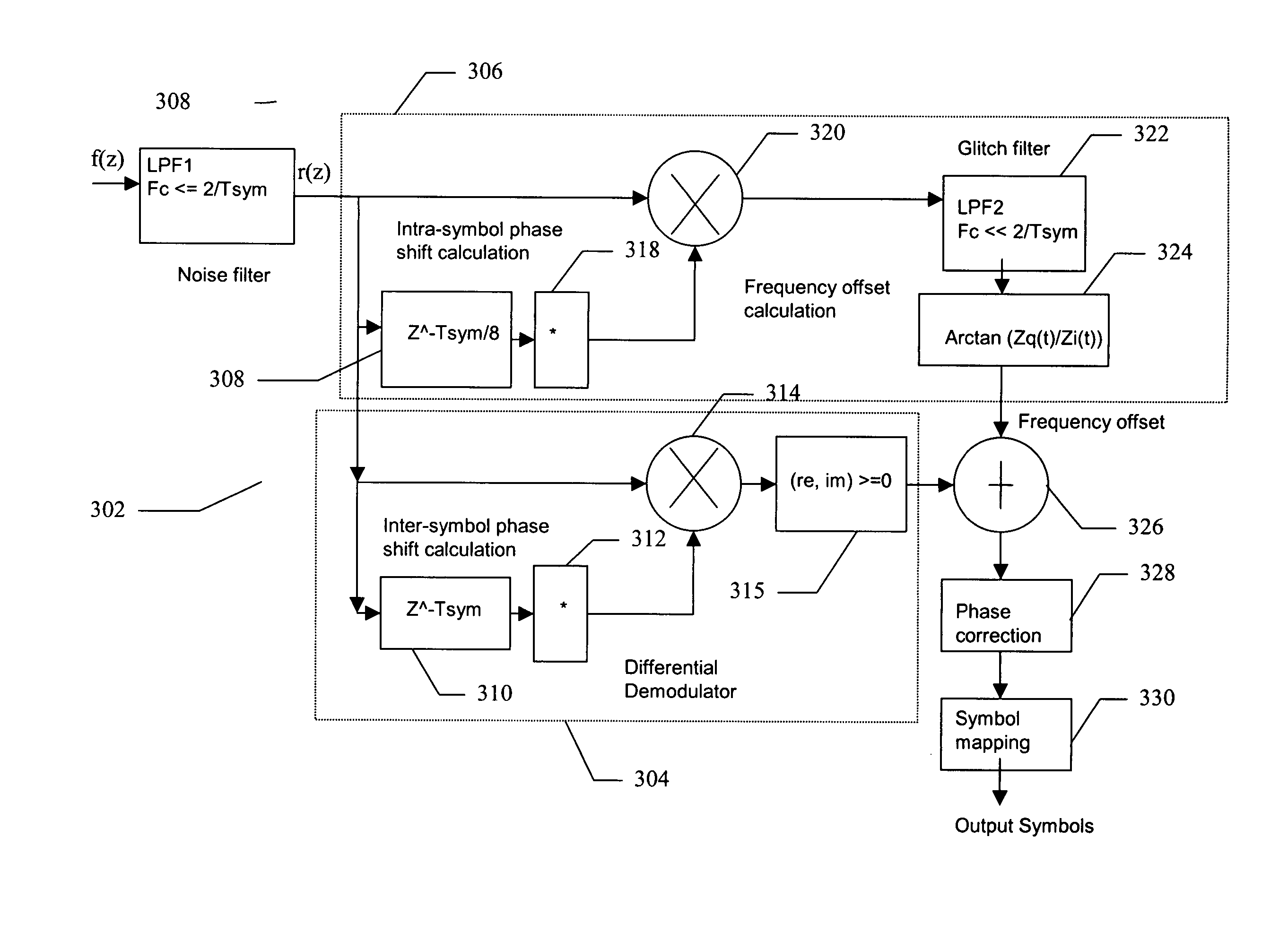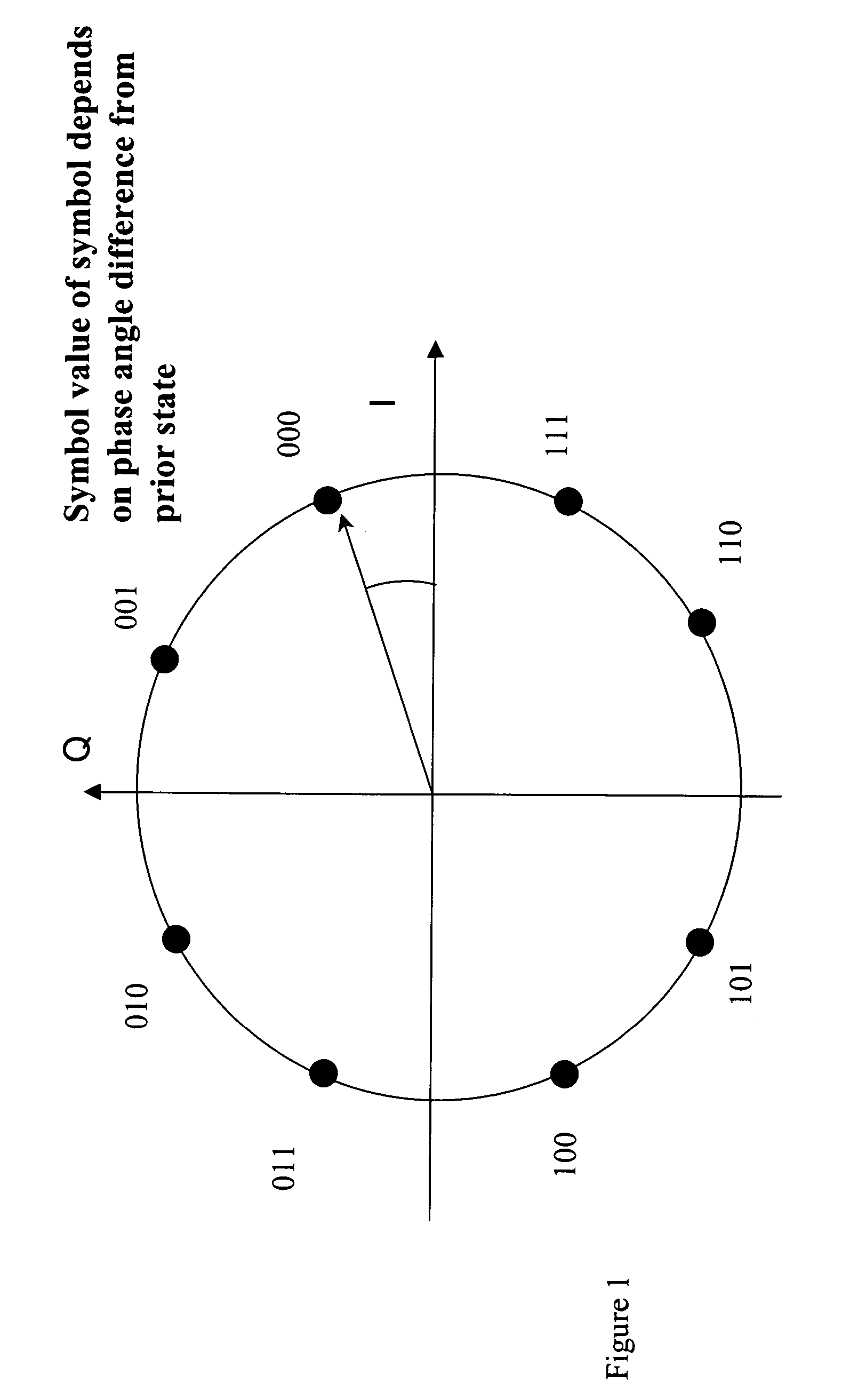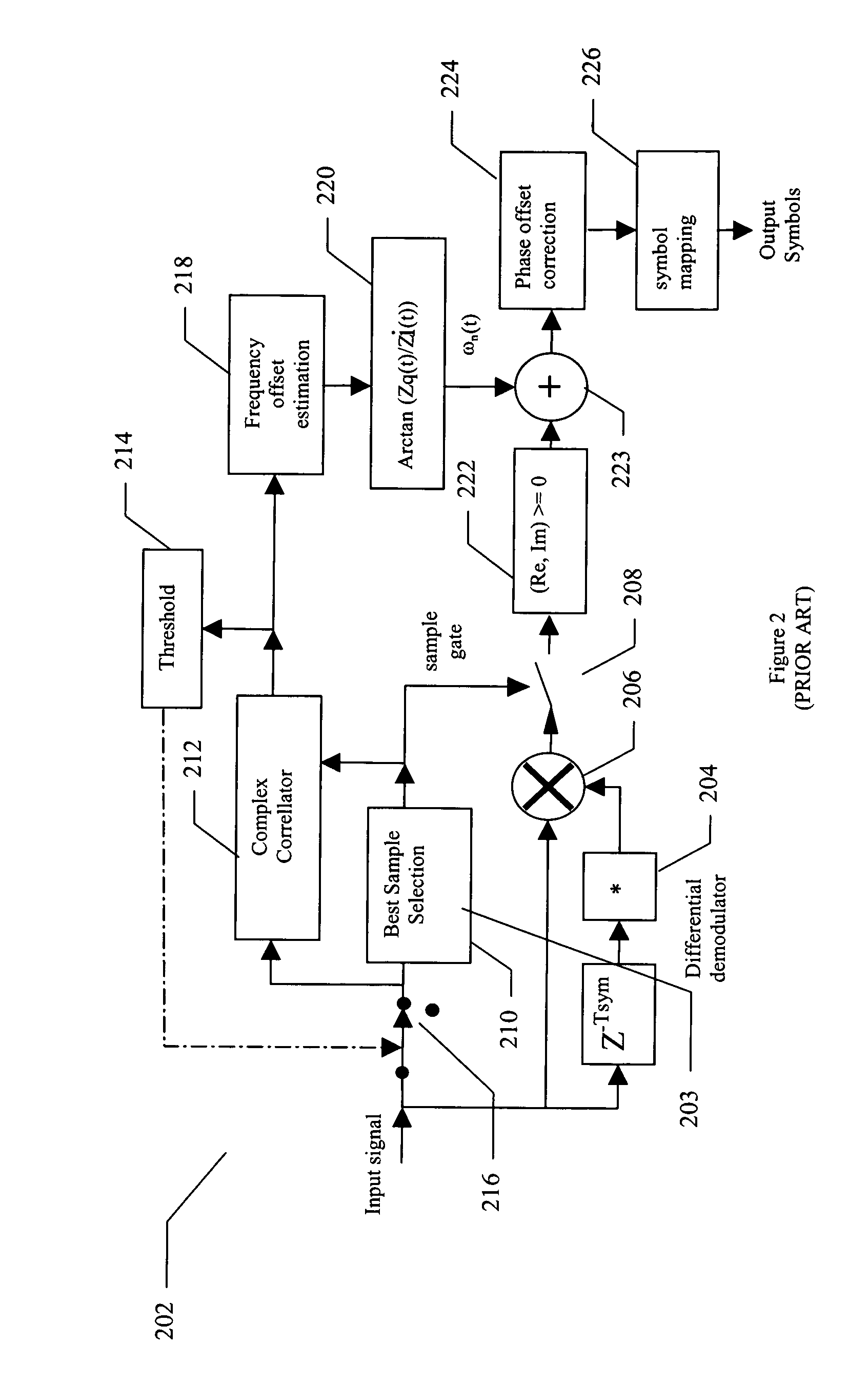Computationally efficient demodulation for differential phase shift keying
a phase shift keying and differential phase shift technology, applied in the field of communication, can solve the problems of high computational cost of correlation and best sample selection process, high degree of computation in a short period consumes significant battery power, and continues to consume battery power at a high rate, so as to reduce or no dependence on complex mathematics, significant computational efficiency, and power consumption requirements
- Summary
- Abstract
- Description
- Claims
- Application Information
AI Technical Summary
Benefits of technology
Problems solved by technology
Method used
Image
Examples
Embodiment Construction
[0031]FIG. 3 is a schematic diagram of a computationally efficient M-ary DPSK demodulator 302 for demodulating a received DPSK signal according to an embodiment of the present invention. Demodulator 302 comprises two primary processing circuits. A differential demodulator circuit 304 demodulates the received signal to determine a phase associated with a received symbol. A frequency offset calculation circuit 306 determines any frequency offset associated with the received signal.
[0032] The demodulator of the present invention can be used in any DPSK communication application. Such communication applications include, for example, satellite, terrestrial and airborne communications. Further, as will be discussed in more detail subsequently, its low power consumption characteristics make it ideal for use in communication systems having low power consumption requirements.
[0033] In operation, DPSK signal is received in a receiver through an antenna. The input signal is sampled in an A / D...
PUM
 Login to View More
Login to View More Abstract
Description
Claims
Application Information
 Login to View More
Login to View More - R&D
- Intellectual Property
- Life Sciences
- Materials
- Tech Scout
- Unparalleled Data Quality
- Higher Quality Content
- 60% Fewer Hallucinations
Browse by: Latest US Patents, China's latest patents, Technical Efficacy Thesaurus, Application Domain, Technology Topic, Popular Technical Reports.
© 2025 PatSnap. All rights reserved.Legal|Privacy policy|Modern Slavery Act Transparency Statement|Sitemap|About US| Contact US: help@patsnap.com



